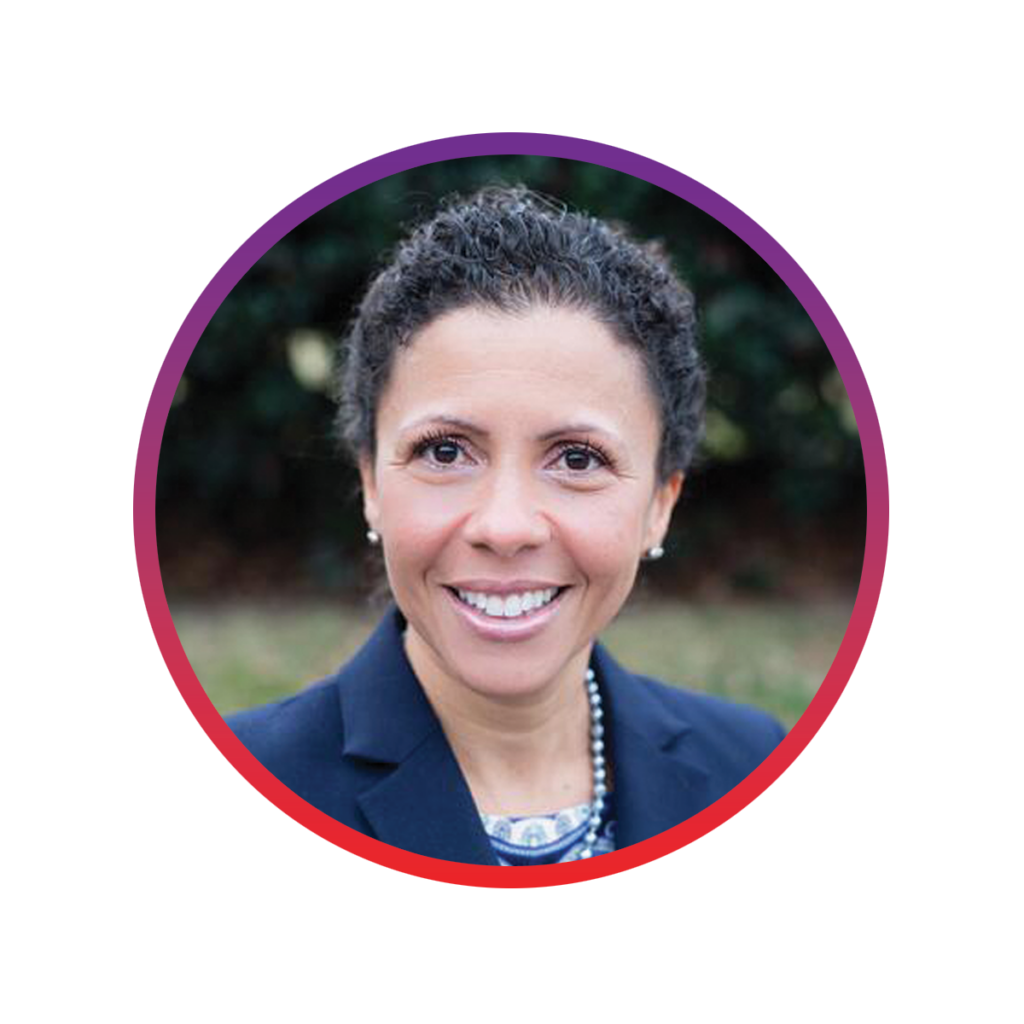In episode 68 of Teaching Channel Talks, we were joined by Dr. Angela Byrd-Wright, the senior director of teaching and learning for Essex County Public Schools. Guided by our host, Dr. Wendy Amato, we explored strategies ECPS uses for approaching teacher learning and professional development, identified the keys to success, and discovered how asset mapping can inspire and inform our professional learning journeys.
If you weren’t able to listen in, now you can read through the engaging and informative discussion on how to foster a culture of continuous learning and growth in our schools!
Wendy: Dr. Byrd-Wright, today we want to talk about how to approach professional development and teacher learning in meaningful ways. What’s your key?
Angela: Well, one of the keys that we use here in Essex County is really using teacher voice and activating that voice through asset mapping. It is important for our teachers to know that when they come to professional development, number one, is it’s something that they want to come to and have a high interest in that really will yield those high leverage skills so that we can use that to inspire their work. And so we use an asset mapping process here in our county to help foster that.
Wendy: What is asset mapping?
Angela: So asset mapping really looks at asking what are the needs of our school division based on student performance, data, teacher feedback, and responses that we see at the division level as we’re going through instructional review and corrective action plans for our teachers and principals. We look at that information to give us a bird’s eye view here at the division level.
We then have a process where we use a template to gather information about our current programs, platforms, and service providers, including consultants, that work with our school division. The purpose of this process is to align our professional learning and training with our school’s learning or improvement plan. It’s crucial that the training and development we offer to our teachers align with our goals, mission, and values; otherwise, we cannot advance the work of teaching and learning. In addition, we make sure that our training is aligned with the written, taught, and tested curriculum to ensure that everyone is on the same page. Just like driving, if you want to go left, but your tire is going right, you’ll end up in a ditch. Therefore, we ensure that our training is aligned so that we can achieve our goals.
Once we gather this information, we have conversations with our principals and their school learning teams to get their input and buy-in. We believe that teachers respond better to hearing from other teachers, so we make sure that they have a voice in this process. Ultimately, our goal is to provide the best teaching and learning opportunities for our teachers, which will positively impact our students in the long run.
Wendy: Dr. Byrd-Wright, you’ve been a classroom teacher yourself. You have also been an assistant principal, a principal, and a coach. When you speak, people should listen as you’ve got experience in all kinds of content! How does all of the research, collection of information, and conversations translate into the recommendations you make for people directly working with students?
Angela: First, I want to thank you, Dr. Amato, for recognizing my trajectory, starting as a classroom teacher, then becoming an instructional coach, and eventually transitioning from management to instructional leadership. I have a broad understanding of what our teachers need to be successful, having sat in their position, and also being in a role where I can design professional learning.
We value teacher voice in our asset mapping process, where we survey and get feedback from them, and use entry and exit tickets to track their progress. For example, we recently focused on the follow-up question that inspires deeper learning, as we believe that whoever does the most talking learns the most. We design professional learning around goals like these and use instructional walks and reviews to track progress. Our small school division ensures that our Superintendent, Chief Academic Officer, Chief Operations Officer, and other leaders, including our building principles, and instructional supervisors join us on these walks. We compile data and provide feedback to teachers during their PLCs (Professional Learning Communities), and also use this information to guide the professional learning that we design.
Wendy: Tell me about the observations. Do you recommend a particular protocol? Does your organization use a checklist? Is it open notes? How formal or informal is it?
Angela: We have created a form for our principals and assistant principals called the “instructional look fors,” which is specific to each content area. These “look fors” are embedded within the instructional model for each content area and for AP and elective teachers. The instructional model includes coaching notes for our teachers, which are embedded in their lesson plans. This way, when teachers are planning their lessons, they have a clear understanding of what is expected of them, and they can easily refer to the coaching notes from the instructional model.
After teachers have created their lesson plans, we engage in instructional walks, where principals, assistant principals, and division staff meet to observe and provide feedback on the lesson plans. During these walks, we look for specific elements, or “look fors,” that we have identified as essential to sound quality instruction. As we observe, we use a specific lens to evaluate whether or not these elements are present in the lesson.
During debriefing sessions, we discuss what we noticed, what we wondered, and what we need to work on moving forward. We then expect our principals and assistant principals to follow up with the teachers to address any areas for improvement. These conversations continue during professional learning communities that take place on a different day of the week. Before we leave the initial meeting, we identify who will be responsible for what tasks over the next two weeks and report out on our progress during the next meeting.
Our goal is to provide clear expectations for our teachers, identify areas for improvement, and provide the support necessary to help our teachers reach their full potential.
Wendy: You also have responsibilities related to grants and to funding. How does the data support the decisions that you’re making?
Angela: Our primary focus is always on the students and their learning. When considering investments in programs, platforms, or service providers, we base our decisions on data and evidence of their effectiveness. As part of our asset mapping process, we not only provide professional development but also conduct thorough research on the potential investment. We ask hard questions about alignment with our school improvement and learning plan, potential for duplication of existing successful programs, and fiscal responsibility. We want to make sure that any investment we make will significantly improve student performance or provide valuable support to our teachers. Essentially, we need to see evidence of transformational impact before we invest. We are committed to making fiscally responsible decisions that provide the greatest return on investment for our students.
Wendy: I love hearing the word investment! It is OK to spend when it’s on the right things.
Now I want to ask about help, how can we help people in positions like yours who are faced with colleagues who say, “We’ve always done it this way. We’ve been doing this for 10 years, 15 years, 18 years.” What do we say to people who need to make a little bit of a change?
Angela: Before we make any changes, we need to evaluate whether our current practices are compliant or effective, or if they need to be adjusted. We should bring data to the table and honestly examine the trends. If we see that not all of our students are progressing positively, we need to consider changing direction or adjusting our approach.
This is like driving a car – when we get too hot, we adjust the air conditioning temperature until we’re comfortable. But when we talk about comfort, we have to consider whether we’re talking about teacher comfort or student learning. We can’t always stay in our comfort zone because true change doesn’t happen there. It’s important to give people the space and time to process and implement changes. That’s why communication is key. We should map out the plan, present the data, and compare it to previous results. We should also provide a schedule and involve the necessary stakeholders, while being organized in our approach. It’s not productive to demand immediate change without any explanation or consideration for those involved. These are some important considerations for the change process.
Wendy: I like hearing support for teachers as an ingredient. Whether it’s students learning, or teachers learning, everybody needs support, structure, and guidance. That’s valuable!
All right, let’s imagine you have a room full of people in a position just like yours and you want to push them into some action. How do we ensure they are taking some steps with the knowledge and guidance you’re giving?
Angela: One important step is to write down your vision and make it clear. What is your vision for where you want to go, and what are the action steps you need to take to get there? When setting a goal, identify the top three things that will help you achieve it, and commit to doing them. For example, if you want to travel to Paris, you can’t just wish for it. You need to research airfare, plan out your itinerary, choose a hotel, and decide which museums to visit.
Similarly, in any goal-setting process, you need to give yourself time and grace. Change cannot happen overnight, so give yourself a timeline and commit to achieving your goals. Write your vision in practical terms and communicate it clearly to those around you. When others see your commitment to the goal, they will be more likely to join you in achieving it.
This conversation has been edited for length and clarity, but you can still listen to the full episode of Teaching Channel Talks and find accompanying learning resources here.
Our Guest

Dr. Angela Byrd-Wright is a highly accomplished educator with a distinguished career in teaching, coaching, and educational leadership. Currently serving as the senior director of Teaching and Learning at Essex County Public Schools, she has successfully demonstrated her vision of leadership and education through sustained rigor, relevance, relationships, and results. With a keen focus on aligning curriculum, instruction, assessment, programming, and equitable best practices, Dr. Byrd-Wright has developed a reputation for significantly improving the performance of students, schools, and divisions.
Our Host

Dr. Wendy Amato earned her Master’s in Education and Ph.D. in Curriculum and Instruction from the University of Virginia. She holds an MBA from James Madison University. Wendy began teaching in 1991, has served as a Middle School Administrator, and still teaches at UVA’s School of Education. She has delivered teacher professional development workshops and student leadership workshops in the US and internationally. Wendy and her family live near Charlottesville, Virginia.






